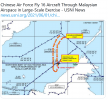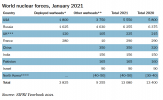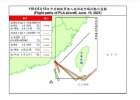First, the LCS project, which is an effort focused on “building capability base” for the RMN, is a form of response and preparedness vis-à-vis the relative threats around Malaysia’s waters. Malaysia is situated at the crossroads of east and west sea lines of communication, with the Malacca Straits acting as a major choke point. The country shares maritime borders with Indonesia, an archipelago nation, and Singapore, the only city island nation in the world. In the east, Malaysia shares water borders adjacent to North Borneo with the Philippines, another archipelagic country. In the west, the Andaman Sea is a hotspot for the influx of seaborne illegal immigrants, smuggling, and trafficking activities connecting to the Malacca Straits. The claim to Sabah by the Philippines also makes North Borneo and the Sulu Islands of the southern Philippines hotspots. And, of course, the South China Sea is contested between Vietnam, the Philippines, Brunei, Taiwan, and China. The Malaysian navy’s resources are stretched in responding to these threats, making it vital to obtain LCS.
Second, the LCS project is a fleet recapitalization effort by the government to provide efficient platforms for operational requirements at sea. Modern electronics and weapon systems, countermeasures, and quick response capabilities are important features in the modern maritime domain. Ever-changing innovations and advances in the technology of both traditional and non-traditional threats make it challenging for states to ensure that their capabilities are up to date. Modern naval ships, i.e. destroyers, frigates, and corvettes, are fitted with anti-surface, anti-submarine, air defense, and electronic warfare capabilities. Currently, existing RMN ships are aging in terms of its capabilities as well as sustainability; most of its ships are over 25 years old and are reaching a point of diminishing returns when it comes to maintenance costs. With the growing mismatch in capabilities, this procurement project is a much-needed modernization component as it can provide an advanced platform to achieve combat effectiveness that the existing RMN is lacking.
Third, as much as diplomacy has become a useful tool for nations, maintaining updated military assets is equally sensible. In today’s context, war dynamics and naval battles have changed with the advent of diplomacy, but the Westphalian system is still relevant when defending a state’s national interest. A
classic example of asymmetric deterrence employed by the weak against the strong may be seen in the case of Vietnam’s efforts to deter China. Wary of China and its activities in the South China Sea, After Beijing’s placement of an oil rig in waters was claimed by Vietnam in 2014, Vietnam purchased Kilo-class submarines from Russia, a move that has forced China to recalculate its actions in disputed waters since. Vietnam has also expanded its procurement of frigates and corvettes equipped with anti-ship and anti-submarine weapons; a move was intended to protect state sovereignty. As a maritime nation, combatant platforms are necessary to address continuous challenges at sea when the current platforms are becoming obsolete.
Fourth, maritime surveillance and law enforcement are a deterrent to crime at sea, but their success requires the vigorous commitment of RMN and the Malaysian Maritime Enforcement Agency (MMEA) to assert their rights and laws of the country in the region claimed. This enforcement has increased during the COVID-19 pandemic, where the RMN and MMEA have worked together to combat non-conventional threats in national waters. This practice of integrating civilian and military assets is common in many modern Western navies. Although the MMEA operates with a dual-task function itself, when it comes to certain aspect such as military operations other than war and search and rescue, substantive resources such as LCS are required to conduct any form of assistance operations in forward area operations (beyond Malaysia’s maritime boundaries). Due to limited capability within the MMEA, the navy is regularly called upon for support.
Fleet modernization is therefore vital not just for defending sovereignty of the country, but also conducting secondary functions such as law enforcement assistance. And if the navy fails to recapitalise the fleet, RMN capability will progressively deteriorate, and the gap between the RMN and the MMEA will close. Without major combatants such as the LCS, the navy will soon be limited to the same capabilities as the MMEA, resulting in a redundant misallocation of resources on government’s part.













